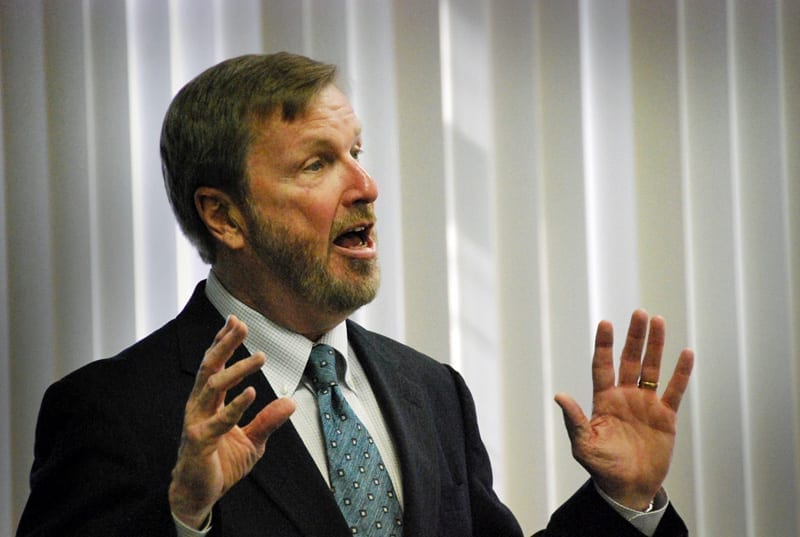In this new weekly column by senior editor Wayne D’Orio, learn why former Mooresville superintendent Mark Edwards says robust PD for digital teaching is the biggest reason his district’s digital transformation worked. Mooresville is now a national model.
Eight years ago in the small North Carolina town of Mooresville, then-superintendent Mark Edwards started an education revolution. Simply put, he went all in on digital teaching and learning. He stopped buying textbooks and put a MacBook Air in the hands of nearly every one of his 6,000 students.
The move has been an unqualified success. Test scores are up, graduation rates have soared, and the waiting list to visit the district has stretched to 500 people. (One visitor pulled rank to cut the line. President Obama choose Mooresville in 2013 to kick off ConnectED, the FCC’s effort to connect 99 percent of the nation’s schools to high-speed internet access by 2018.)
But there’s one part of the Mooresville story that hasn’t been much talked about: professional development. And according to Edwards, PD for digital teaching just may be the key piece to whole initiative.

The key is to train the teachers and then encourage them to learn from one another.
We’ve all seen districts buy new devices and software solutions and still fail to move the needle on learning. Edwards knew that despite the headline-grabbing moves of eschewing textbooks and going 1:1, Mooresville’s digital transformation would succeed only if the staff could be taught to change their methods, empower students, and embrace the new digital tools.
“Professional development is not a sidebar to building that structure, that capacity. It is essential,” says Edwards. (Edwards recently left Mooresville to become senior vice president of digital learning for Discovery Education.) “Long term professional development is an absolute key to success.”
Professional Development + Digital Learning = Personalized Education
Much of the professional learning that occurred in Mooresville happened when teachers got together to share successes and frustrations. The district’s “absolute priority” was helping teachers change the instructional process in their classroom, he adds.
Now, students at Mooresville not only have personalized education, but the schools can offer precise intervention when needed, Edwards says. “These gains tie directly to sustained professional development.”
For many years, the question Edwards faced was ‘Can my district do this too?’ But today he notes that not only have the prices for devices decreased, but also the amount of quality digital material for students has grown exponentially, making repeating his transformation easier. Because more districts have completed their own ‘digital transformations’ now, aspirational districts have a wide variety of models to consider as they try to pivot schools away from print materials
But when Edwards looks into the future, he thinks professional development will be responsible for the greatest gains. “There are new levels of collaboration that will enhance productivity,” he says. “With new teachers, there’s no ceiling, no lid.” By pushing innovation, and connecting with each other across district and state lines, he expects the net effect to rapidly improve teaching and learning across the country.
| [custom_author=WayneD] |
